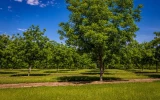How Many Paulownia Trees Should You Plant per Acre?
When you're trying to grow Paulownia trees for timber, you can plant as many trees as possible to maximize your yield. But for landscaping or ornamental purposes, they need to be spaced apart, resulting in a lesser number of trees. Whichever purpose you have in mind, this article will help you determine exactly how many paulownia trees you should plant per acre.
Generally, Paulownia trees are planted at a spacing of 10 to 15 feet apart, which translates to about 290 to 435 trees per acre. However, if the soil is particularly fertile or the climate is favorable, you may be able to plant more trees per acre.
Paulownia is a light-sensitive plant that needs to be planted at equal distances. The spacing between trees can affect not only their growth and yield but also the overall health of the plantation. Let's learn more about the required growing conditions for Paulownia trees.
Summary
- For high-density timber production, a spacing of 12' x 12' with 300 trees per acre is recommended.
- For medium-density timber production, a spacing of 14' x 14' with 220 trees per acre is recommended.
- For low-density timber production or other purposes, a spacing of 16' x 16' with 170 trees per acre is recommended.
- A smaller spacing results in smaller-diameter trees suitable for high-value timber products, while a larger spacing results in larger-diameter trees that may be used for lower-value timber products or other purposes such as fuel or mulch.
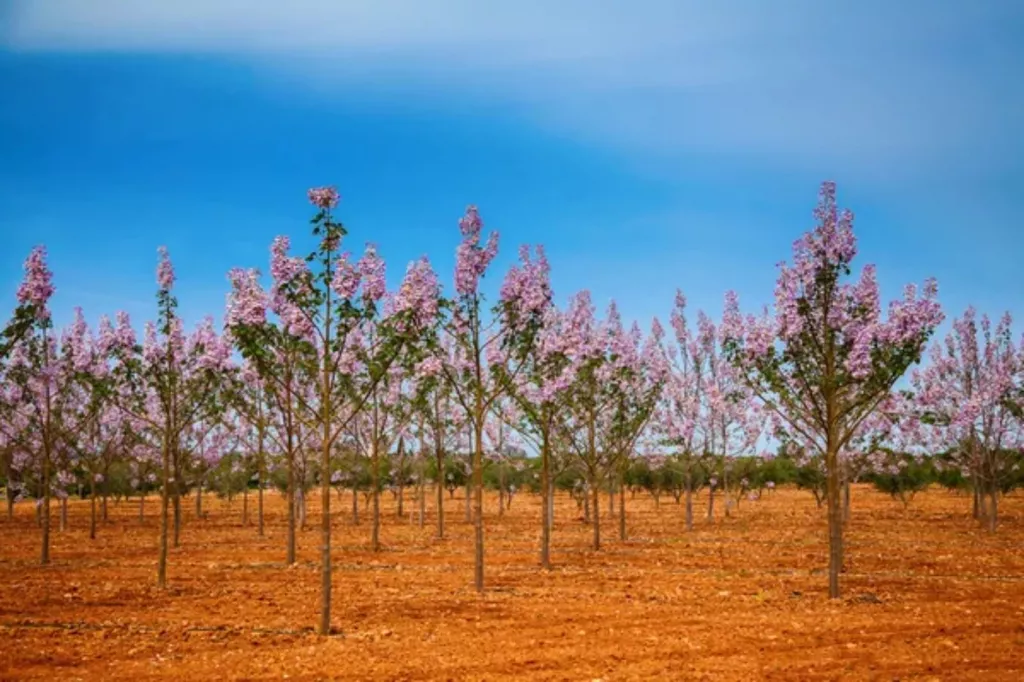
On this page:
Density Of Paulownia Trees Per Acre
Generally, Paulownia trees are planted at a spacing of 10 to 15 feet apart, which translates to about 290 to 435 trees per acre.
Paulownia is a light-sensitive plant that needs to be planted at equal distances. The spacing between trees can affect not only their growth and yield but also the overall health of the plantation.
The table below shows the estimated tree density when planting paulownia trees based on their intended use:
| Intended Use | Recommended Density (Trees per Acre) |
|---|---|
| Timber production | 300-500 |
| Landscaping | 100-200 |
If you're planting paulownia trees for timber production, a density of 300 to 500 trees per acre is recommended. This density allows for optimal growth and timber production.
However, if you're planting paulownia trees for landscaping purposes, a lower density of 100 to 200 trees per acre is sufficient.
This is because when planting paulownia trees for landscaping purposes, such as for shade, privacy, or aesthetics, you don't need as many trees per acre as you would for timber production.
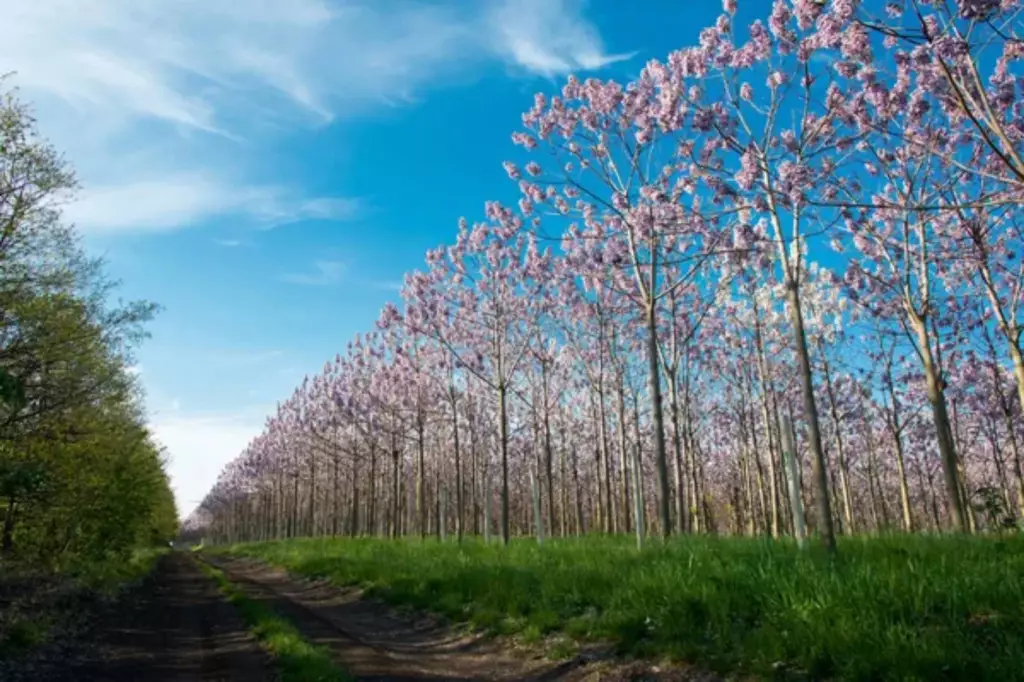
The trees don't need to grow as tall or as straight as they would for timber production. Additionally, a lower density of trees allows each tree to have more space to grow and spread out, which can enhance their overall appearance and create a more natural look.
If you're looking for other faster-growing timber trees that can help you earn money in no time, you can read this article to find out.
Recommended tree density for timber production
The table below summarizes the recommended number of paulownia trees per acre based on the aimed timber density production:
| Spacing (Feet) | Trees Per Acre | Purpose |
|---|---|---|
| 12 x 12 | 300 | High-density timber production |
| 14 x 14 | 220 | Medium-density timber production |
| 16 x 16 | 170 | Low-density timber production |
-
A spacing of 12' x 12' is recommended for paulownia plantations that are intended for high-density timber production. This spacing allows for 300 trees per acre, which results in smaller-diameter trees that are suitable for making high-value timber products such as musical instruments, furniture, and veneers.
-
A spacing of 14' x 14' is recommended for paulownia plantations that are intended for medium-density timber production. This spacing allows for 220 trees per acre with slightly larger-diameter but are still suitable for high-value timber products but may take slightly longer to reach maturity.
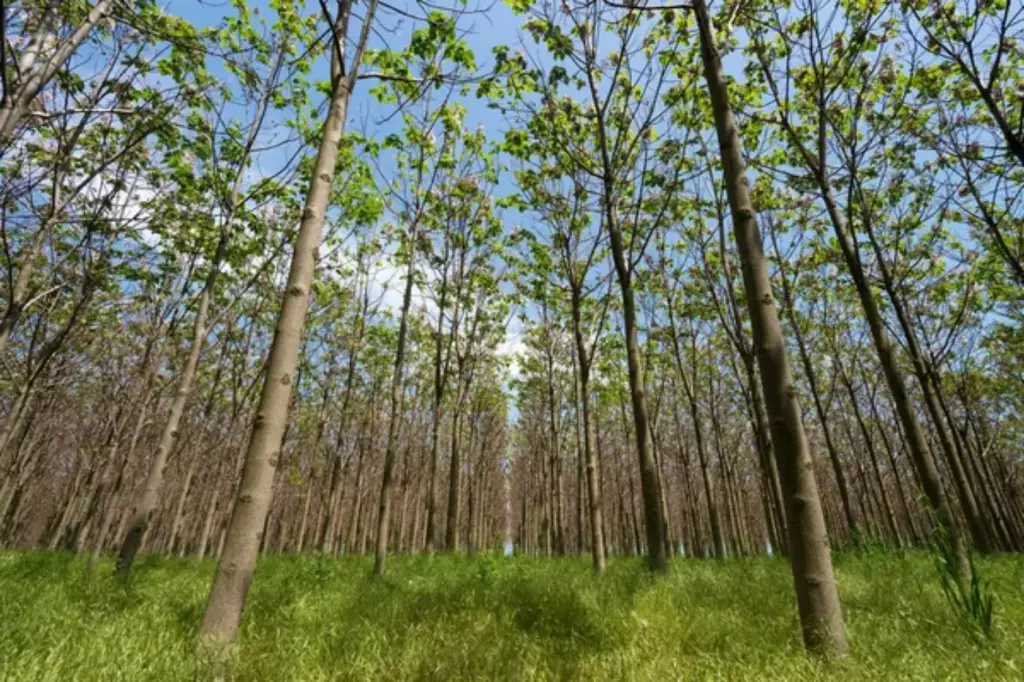
- A spacing of 16' x 16' is recommended for paulownia plantations that are intended for low-density timber production or for other purposes such as biomass production or windbreaks.
This spacing allows 170 large-diameter trees per acre, which can be used for lower-value timber products or for other purposes such as fuel or mulch.
Note that a tree farm whose sole purpose is timber production requires at least 5 acres of land, according to this article.
Ideal Conditions For Paulownia Plantation
Aside from spacing, there are other ideal conditions required for the optimal growth and development of paulownia trees such as the following:
| Ideal Conditions | Requirement for Paulownia Trees |
|---|---|
| Soil requirements | Well-drained, fertile soil with a pH of 5.5-7.5 |
| Water and irrigation needs | Regular watering during the first 2-3 years, then drought-tolerant. Irrigation may be required in dry areas. |
| Temperature and climatic conditions | Prefers warm temperate to subtropical climates with mild winters and hot summers. Can tolerate temperatures as low as -10°C and as high as 40°C. |
| Altitude and location factors | Grows well at altitudes up to 1,500 meters above sea level. Can grow in a variety of soil types and locations, but prefers full sun and protection from strong winds. |
They require well-drained soils
Paulownia trees can grow in a wide range of soil types, but they prefer well-drained soils that are rich in nutrients.
Sandy soils are ideal for paulownia plantations, but clay soils can also be used if they are well-drained and have good soil depth.
Poorly drained soils can lead to waterlogging, which can cause root rot and other diseases that can harm the trees.
To ensure proper drainage, you may need to add drainage tiles or other drainage systems to the soil.
Paulownia trees also require a certain level of soil fertility to grow and thrive. This can be achieved by adding organic matter such as compost or manure to the soil before planting.
They have specific irrigation needs
Paulownia trees have high water requirements, especially in the early stages of growth.
In areas with low precipitation, supplemental irrigation may be necessary to ensure that the trees receive enough water.
Drip irrigation is a popular method for irrigating paulownia trees as it provides water directly to the root zone of the tree, minimizing water loss due to evaporation and runoff.
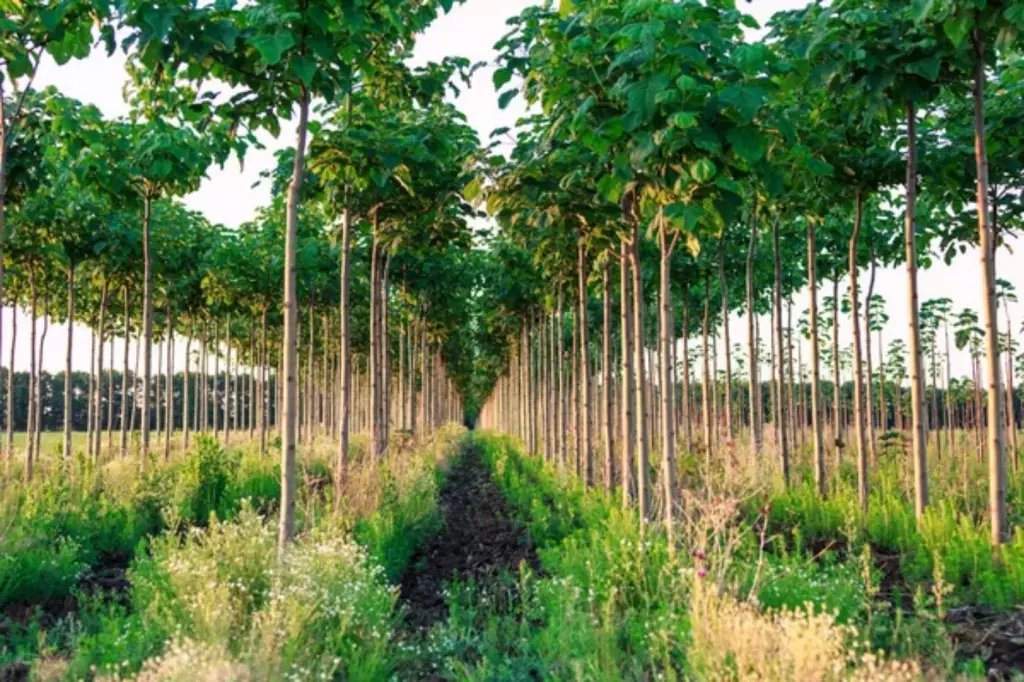
Monitor soil moisture levels regularly to prevent drought stress, which can occur when the soil moisture level is too low for the tree to absorb enough water to meet its needs.
To avoid drought stress, it is recommended to maintain soil moisture levels at around 60-70% of field capacity.
You can achieve this by scheduling irrigation based on the tree's water needs, monitoring soil moisture levels using a soil moisture sensor, or observing plant growth and leaf color.
They prefer warm temperatures
Paulownia trees are known to prefer warm temperatures and can thrive in a variety of climatic conditions.
They can grow in areas with warm summers and mild winters, but they are not well-suited for regions with cold temperatures or frost.
When exposed to frost or cold temperatures, the leaves and branches of paulownia trees can be damaged, which can negatively impact their growth and overall health.
Therefore, you should avoid planting paulownia trees in areas with a high risk of frost or cold temperatures.
They prefer slightly elevated areas
Paulownia trees can grow at a wide range of altitudes, but they prefer areas with low to moderate elevations. They also prefer areas with full sun exposure and protection from severe winds.
In the USA, paulownia trees are commonly grown in the southern states, while in China, they are grown in the central and southern regions.
Planting And Maintaining Paulownia Trees
Planting techniques and equipment
Paulownia trees can be planted using different techniques, including direct seeding, planting seedlings, and using root cuttings.
- Direct seeding is the most common method, but it requires careful soil preparation and weed control.
- Planting seedlings is also an effective method but requires more labor and equipment.
- Root cuttings can propagate paulownia trees, but they require more time and effort.
When planting paulownia trees, use the right equipment, including a tractor, plow, harrow, and planter. The equipment should be in good condition and properly adjusted to ensure optimal planting.
Nursery and seedlings preparation
To ensure successful planting, prepare the nursery and seedlings properly. The nursery should be located in an area with good soil drainage, and the soil should be fertile and well-drained.
The seedlings should be healthy and disease-free, and they should be planted at the right time. Before planting, the seedlings should be hardened off by gradually exposing them to outdoor conditions.
This process helps the seedlings adapt to the new environment and reduces transplant shock. You may need to water the seedlings regularly and provide them with the right nutrients to ensure optimal growth.
Maintaining Paulownia plantation
To ensure the healthy growth of your paulownia plantation, you need to carry out regular maintenance activities including pruning, fertilizing, and dealing with pests and diseases.
Prune your trees annually
Pruning helps maintain the shape, size, and health of your paulownia trees. It would help to prune your trees annually, preferably during the dormant season.
Pruning helps to remove dead, diseased, or damaged branches, and it also helps to stimulate new growth.
Apart from pruning, it would help if you also carried out other maintenance activities such as weeding, mulching, and watering.
Weeding helps to remove unwanted plants that compete with your paulownia trees for nutrients and water.
Mulching helps to conserve soil moisture and suppress weed growth while watering is necessary during dry periods to ensure your trees receive enough water.
Apply fertilizers as needed
Paulownia trees require adequate nutrients to grow healthy and strong. You should apply fertilizers to your trees to supply them with essential nutrients such as nitrogen, phosphorus, and potassium.
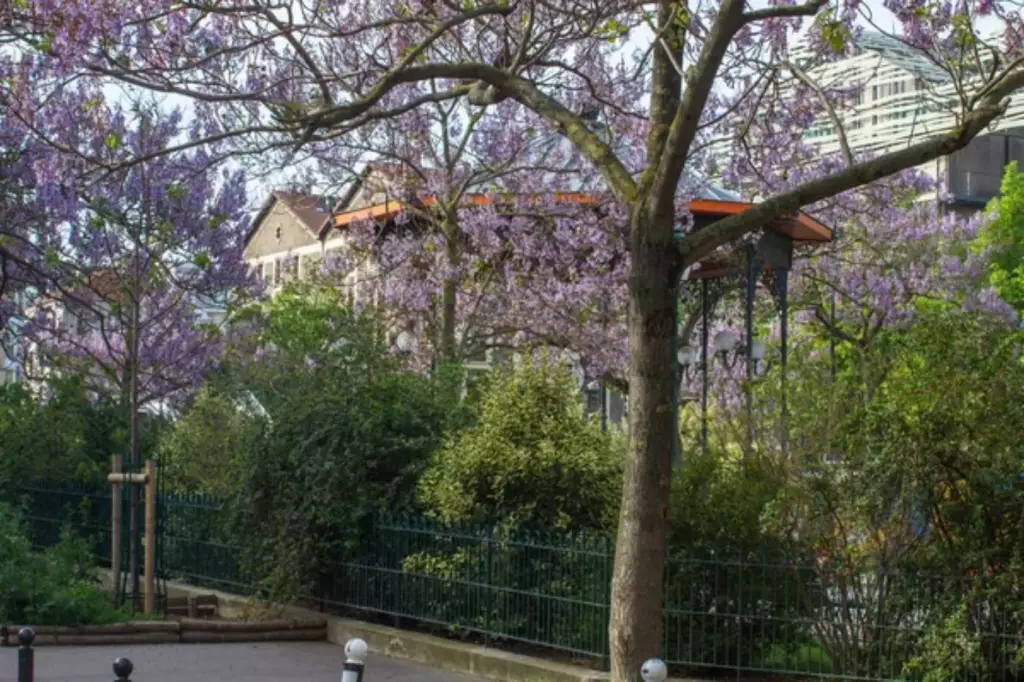
The type and amount of fertilizer you use depend on the soil type, tree age, and growth stage. You can conduct a soil test to determine the nutrient levels in your soil.
Based on the test results, you can apply the appropriate fertilizer to your trees. You can use organic or inorganic fertilizers to supply your trees with nutrients.
Dealing with pests and diseases
Some of the common pests that attack paulownia trees include borers, aphids, and mites. You can control these pests by using insecticides or by introducing natural predators such as ladybugs.
Some of the common diseases that affect paulownia trees include root rot, leaf spot, and canker. You can prevent these diseases by maintaining good hygiene practices such as removing dead or diseased wood and avoiding waterlogged soils.
You can read more about the costs and investments of a lumber business in this article.
